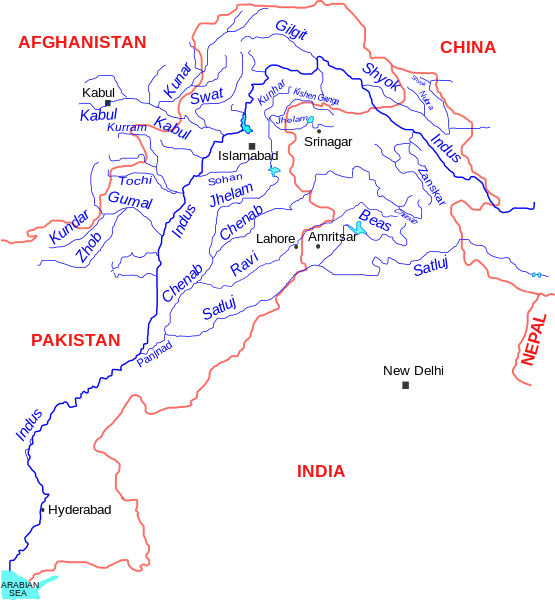Water Conflicts
Water is a fundamental human need and sought after resource even when considering the abundance of it on the Earth. South Asia has a large river system that flows between Pakistan and India leading to a combined 5,000 miles of Indian Ocean coastline. Although the two nations have gone to war many times, the division of water resources is a shining bright spot in their relationship and is widely known to be one of the longest and most upheld in the world.
It first started with the vast river systems that flow throughout the Pakistan and Indian borders. With more than 4oo rivers in India and 24 rivers in Pakistan where some of the rivers cross borders multiple times, they had a lot to separate. The main agreed upon document was the Indus Water Treaty signed in 1960 which is a ratified version of a previous document. This gave control to the three eastern rivers to India which were the Beas, Ravi, and Sutlej that flowed 41 billion M³ annually. It also gave control of the three western rivers to Pakistan which are the Indus, Chenab, and Jhelum that flowed 99 billion M³ a year. The document further specifies the division of the rivers as many of them cross the border to the other country. It lays down detailed regulations for building over the river, fishing culture, industry, and irrigation. Because India is located upstream a mutual compromise was made in recognition that both countries want to optimally use the river systems for many purposes in the spirit of cooperation. A main purpose is provided clean and efficient energy with the use of dams, which both countries utilize. The rivers, especially the Indus and Ganges, are spiritually sacred to the Hindi religion and therefore are treated as such and it is given more than just pure practical uses. Provisions have been added such as each country is required to notify the other of any building plans and other activities being undertaken. Even though the countries have gone to war, the protection of the rivers has been upheld even during these times. If future conflict arises, India could use the waters to cause mass flooding and damage downstream to Pakistan for a strategical advantage. Overall, they have never had any serious conflicts over the distribution of the sacred resource of water and the current relationship has remained cordial.

Southern Asia River Systems
Due to the longstanding conflict between the two nations, they have both built up their navies significantly in the past two decades. These navies strictly patrol the waters surrounding the coastlines for any violations of the maritime agreement they have in place. Even though the war has mostly been on land, their have been mid size attacks and battles originating from the Indian ocean. The first instance of this was operation Dwarka where the Pakistan Navy attacked the India coastal town of Dwarka. These water battles have historically been few and far between. Each nation relies on maritime activities economically such as fishing with exclusive rights to large areas of the coast line. They both value this so much that their have been many cases of trespassing into one another’s waters and illegally taking fish. This has caused increased military patrols that just continues to add tension. These industries are both important for trade and a food supply for their large populations.
Overall, water is a vital resource to both nations, but has been a bright spot of their relationship with treaties that have been largely upheld. A recent calling has been made to update the treaties to be more climate change oriented to reduce the water consumption that is a leading factor to the reduction in flow to the river. A reduction in use may go a long way in the long term viability of the river that would be nearly impossible to get back once gone.
Sources
https://indiawris.gov.in/wiki/doku.php?id=major_river_system_in_india
https://byjusexamprep.com/upsc-exam/river-system-in-india
https://www.usip.org/publications/2023/02/india-and-pakistan-are-playing-dangerous-game-indus-basin#:~:text=The%20international%20dispute%20over%20Indus,a%20matter%20of%20national%20survival.
https://southasianvoices.org/contested-waters-the-maritime-dimension-of-india-pakistan-relations/


